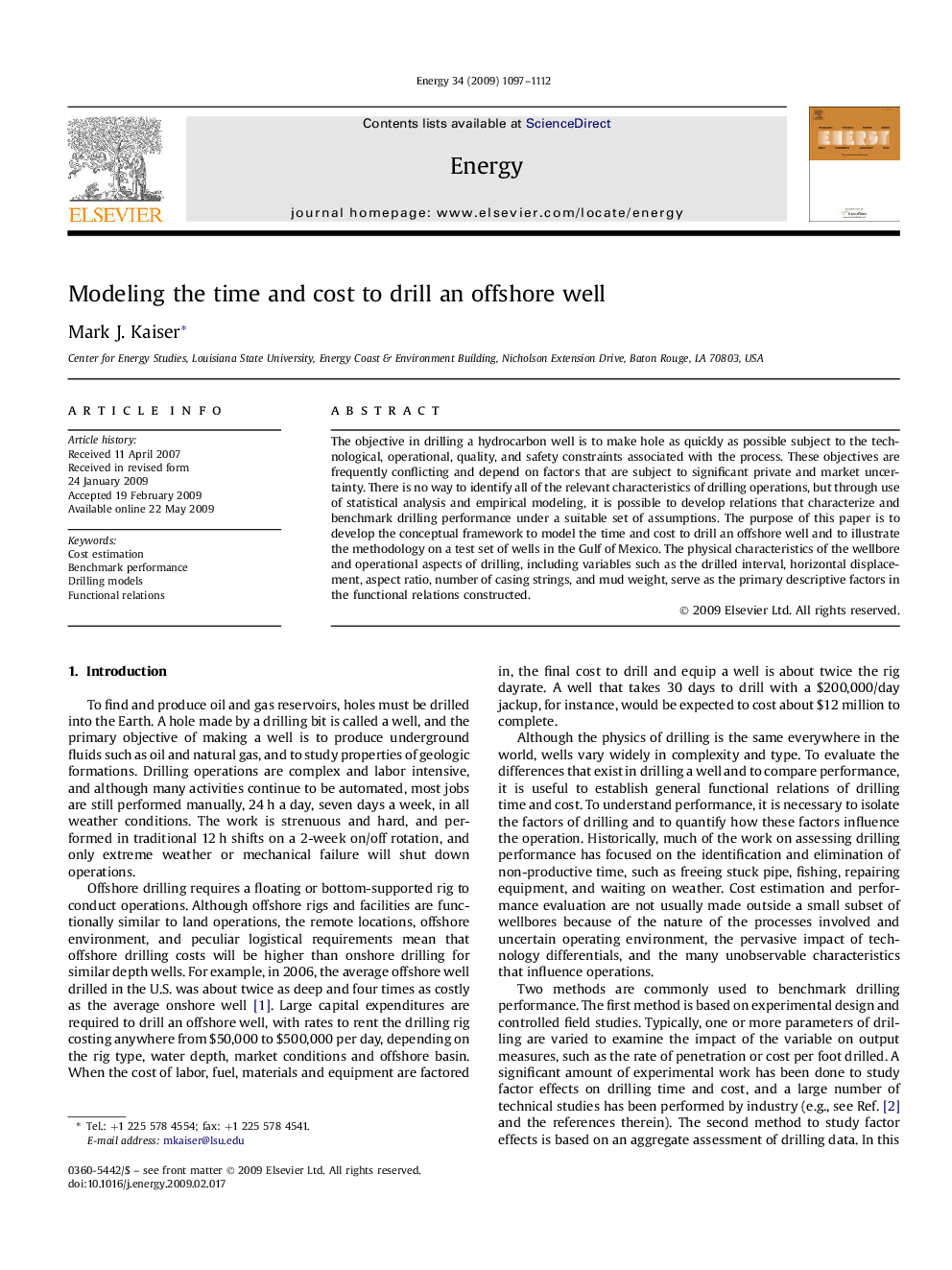| Article ID | Journal | Published Year | Pages | File Type |
|---|---|---|---|---|
| 1734419 | Energy | 2009 | 16 Pages |
The objective in drilling a hydrocarbon well is to make hole as quickly as possible subject to the technological, operational, quality, and safety constraints associated with the process. These objectives are frequently conflicting and depend on factors that are subject to significant private and market uncertainty. There is no way to identify all of the relevant characteristics of drilling operations, but through use of statistical analysis and empirical modeling, it is possible to develop relations that characterize and benchmark drilling performance under a suitable set of assumptions. The purpose of this paper is to develop the conceptual framework to model the time and cost to drill an offshore well and to illustrate the methodology on a test set of wells in the Gulf of Mexico. The physical characteristics of the wellbore and operational aspects of drilling, including variables such as the drilled interval, horizontal displacement, aspect ratio, number of casing strings, and mud weight, serve as the primary descriptive factors in the functional relations constructed.
